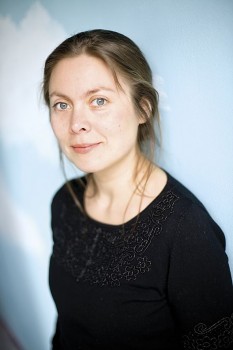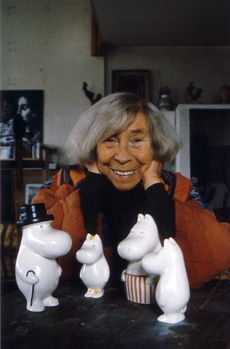Search results for "2011/04/matti-suurpaa-parnasso-1951–2011-parnasso-1951–2011"
Tero Tähtinen: Katmandun unet. Kirjoituksia idästä ja lännestä [Kathmandu dreams. Writings about East and West]
26 January 2012 | Mini reviews, Reviews
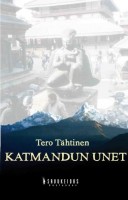 Katmandun unet. Kirjoituksia idästä ja lännestä
Katmandun unet. Kirjoituksia idästä ja lännestä
[Kathmandu dreams. Writings about East and West]
Turku: Savukeidas, 2011. 332 p.
ISBN 978-952-268-005-1
€ 19.90, paperback
Tero Tähtinen’s second collection of essays is focused physically in the wilds of a Finnish national park and Nepal – where the author (born 1978), a literary scholar and critic, has frequently travelled – and mentally in the divergences of Western and Eastern thought, which Tähtinen, who is familiar with Zen and Buddhist philosophy, studies, occasionally by means of literary examples. The ‘Socratic ego’ of the Western egocentric, individual ‘I’, which strives in vain to understand the whole of reality by rationalising it, is his favourite bête noire. Tähtinen quickens the pace of his verbal virtuosity as he discusses both dogmatic, materialistic faith in science – as well as some of its representatives – and Christian faith: he considers that both, in their pursuit of an absolute and total explanation, end up in a metaphysical vacuum. Unlike them, Eastern philosophy, in which the individual ‘I’ is not the centre and measure of all things, does not give rise to the anxiety of compulsive cognition. The virtual narcissism of Facebook, a platform tailor-made for the Socratic ego, receives Tähtinen’s outright condemnation: ‘Facebook trivialises humanity,’ he declares. At the end of these passionate essays on the author praises silence.
Translated by David McDuff
Winner of the Nordic Council Literature Prize
6 November 2014 | In the news
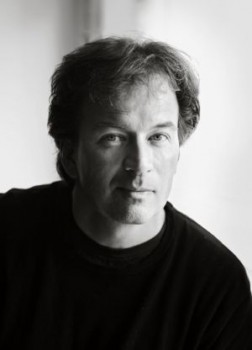
Kjell Westö. Photo: Kata Portin
The Nordic Council Literature Prize 2014 went to Kjell Westö and his novel Hägring 38 (‘Mirage 38’, 2013; in Finnish, Kangastus 38). The prize, awarded since 1962 and worth €47,000, was given on 29 October at a ceremony in Stockholm.
Among the 13 nominees was another Finn, the poet Henriikka Tavi with her collection Toivo (‘Hope’, 2011).
The jury said: ‘The Nordic Council Literature Prize goes to the Finnish writer Kjell Westö for the novel Mirage 38, the evocative prose of which breathes life into a critical moment in Finland’s history [the time before the Winter War, 1939–1940] – one that has links to the present day.’ Here, more on Westö and his winning novel.
Too much, too soon?
20 January 2012 | This 'n' that
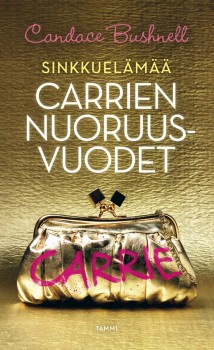 Candace Bushnell’s Summer & the City (about Carrie Bradshaw’s first years in NYC, published last year) is categorised among books for children and young people on the Finnish best-sellers’ list. The Finnish translation occupied the eighth place in December.
Candace Bushnell’s Summer & the City (about Carrie Bradshaw’s first years in NYC, published last year) is categorised among books for children and young people on the Finnish best-sellers’ list. The Finnish translation occupied the eighth place in December.
But hang on, wasn’t this Carrie in the fantastically famous HBO television adaptation of Bushnell’s novel Sex and the City very much in her thirties, as were her three best friends – all with, yes, quite active ‘adult’ sex lives…? In Finland the series had a rather silly title, Sinkkuelämää, ‘Single life’.
Well, of course it would be foolish not to continue the fantasticaly famous money-spinning saga, so Bushnell has gone back in time, first to Carrie’s school years in small-town America in The Carrie Diaries (2010), then to her first years in NYC in Summer & the City (2011) – and HarperCollins has pigeonholed them among its ‘teen books’.
Confusingly, the Finnish titles of these two books also contain the word referring to the television series: Sinkkuelämää – Carrien nuoruusvuodet and Sinkkuelämää – Ensimmäinen kesä New Yorkissa. As the Finnish publisher Tammi has attached TV title to them, the customer assumes these are books for ‘adults’ – as indeed was the original Sex and the City.
This makes one wonder what exactly ‘books for young people’ are. The main characters are teens themselves? If Bushnell goes still further back in time, we shall be reading about naughty Li´l Carrie hitting another toddler on the head with her doll, in a board book.
Katja Hagelstam & Piëtke Visser: 20+12 design stories from Helsinki
4 April 2012 | Mini reviews, Reviews
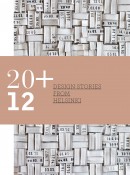 20+12 design stories from Helsinki
20+12 design stories from Helsinki
Helsinki: WSOY, 2011. 191 p., ill.
ISBN 978-951-0-38120-5
€35, hardback
In Finnish:
20+12 muotoilutarinaa Helsingistä
ISBN 978-951-0-38136-6
In celebration of Helsinki’s status as World Design Capital 2012 comes this volume of vignettes of the city’s designers. Twenty Helsinki designers and artists – from textile designers and animators to illustrators and industrial designers – are interviewed by Eva Lamppu about their work and the inspiration they find in their city. The result, handsomely illustrated with atmospheric photographs by Katja Hagelstam, is a fascinating composite portrait, a colourful patchwork of creative lives lived out against the compact and interconnected fabric of this small northerly capital, which – not unexpectedly – is revealed as both sympathetic and conducive to good design. The book is rounded off by suggestions from 12 people active in creative fields on the city’s future. A fascinating and heartwarming study.
Markku Kuisma: Saha. Tarina Suomen modernisaatiosta ja ihmisistä jotka sen tekivät [The sawmill. A story about Finnish modernisation and the people who realised it]
29 May 2012 | Mini reviews, Reviews
 Saha. Tarina Suomen modernisaatiosta ja ihmisistä jotka sen tekivät
Saha. Tarina Suomen modernisaatiosta ja ihmisistä jotka sen tekivät
[The sawmill. A story about Finnish modernisation and the people who realised it]
Helsinki: Siltala, 2011. 235 p.
ISBN 978-952-234-069-6
€ 34.90, hardback
In his new book Professor Markku Kuisma, a specialist in economic history, approaches the modernisation of Finland in the 19th century from the perspective of the sawmill industry. In the mid 19th century, Finland’s forest reserves were, in relation to its population, among the greatest in Europe. The rise of the sawmill industry was made possible by Britain’s removal of taxation on industrial imports, the development of Finland’s railways and other means of transport, the removal of Finnish restrictions on the timber industry, the spread of steam saws and changes in society. The foundations of the breakthrough of the sawmill industry were laid in the 1860s, but it began to flourish gradually. Between the two world wars Finland became Europe’s biggest exporter of timber, and for a long time the country derived most of its export income from timber products. Kuisma also draws interesting portraits of the men who made the change possible both in government administration and economic life and laid the basis for industrial dynasties. Saha is a concise but illuminating and engrossing introduction to an important phase in the development of Finnish economic life.
Translated by Hildi Hawkins
Dear Reader!
13 January 2011 | This 'n' that
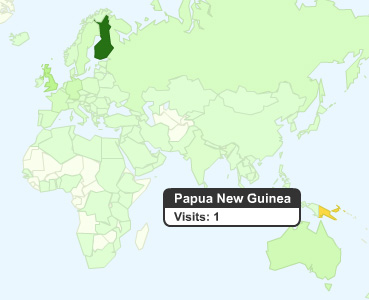
Reading Books from Finland here, there and... Photo: Google Analytics
2011 is well underway, and it’s back to business – reporting on good books from Finland, that is!
The new year also marks the beginning of our third year online: we are very pleased to note that last year visits to this site increased by 187 per cent compared to 2009!
Our foreign readers hail from a total of 149 countries, although the majority are in the United States and the United Kingdom – with a surprisingly large number of neighbourly visits from readers in Finland.
There are some countries where only one reader has taken a look at Books from Finland last year; greetings to our own readers in Honduras and Papua New Guinea…. But, on the other hand, readership in Belarus has grown by 2.400 per cent, from just one in 2009 to a grand total of 25!
We’ve been very glad to have your online feedback, which prompted us to think that since we haven’t done a reader survey for a longish time, we might take the opportunity to run another one now – so we’ll be quizzing you about your views of the contents of the journal on this page soon.
We hope to offer you more that is diverting, entertaining and thought-provoking this year than ever before. Remember, you can also keep abreast of what’s going on on the Books from Finland website by subscribing to our RSS and e-mail delivery services (and we’re on Facebook, too).
Happy new year, and good reading!
The editors
Soila Lehtonen (Helsinki)
Hildi Hawkins (London)
Beyond words
15 December 2010 | This 'n' that

Meeting place of the Lahti International Writers' Reunion: Messilä Manor
‘Whereof one cannot speak, thereof one must remain silent.’
This famous quotation from the Austrian philosopher Ludwig Wittgenstein has been adapted by the organisers of the Lahti International Writers’ Reunion (LIWRE): the theme of the 2011 Reunion, which takes place in June, will be ‘The writer beyond words’.
‘Whereof one cannot speak, thereof one must write.’ How will the writer meet the limits of language and narration?
‘There are things that will not let themselves be named, things that language can not reach. Our senses give us information that is not tied to language – how can it be translated into writing? And how is the writer going to describe horrors beyond understanding or ecstasy that escapes words? How can one put into words hidden memories, dreams and fantasies that lie suppressed in one’s mind? Does the writer fill holes in reality or make holes in something we only think is reality?
‘Besides literature, there are other forms of interpreting the world; can the writer step into their realms to find new ways of saying things? The surrounding social sphere may put its own limits to writing. What kind of language can a writer use in a world of censorship and stolen words? How does the writer relate to taboos, those dimensions of sexuality, death or holiness that the surrounding world would not want to see described at all? Is it the duty of literature to go everywhere and reveal everything, or is the writer a guardian of silence who does not reveal but protects secrets and everything that lies beyond language?’
The first Writers’ Reunion took place in Lahti at Mukkula Manor in 1963; since then, more than a thousand writers, translators, critics and other book people, both Finnish and foreign, have come to Mukkula to discuss various topics.
In 2009 the theme was ‘In other words’, which inspired the participants to talk about the power of the written word in strictly controlled regimes, about fiction that retells human history and about the differences between the language of men and women, among other things. See our report from the 2009 Reunion; eleven presentations are available in English, too.
A fleeting scent
24 October 2013 | Fiction, poetry
Poems from Öar i ett hav som strömmar (‘Islands in a flowing sea’, Schildts and Söderströms, 2013). Introduction by Michel Ekman
A fig wasp’s life
She squeezes in. The opening closes and the world overflows. She swims in the sweet flowing moisture. In the sycamore fig tree, a myriad of delicate white blossoms have burst out. For her eyes alone, a damp garden, alabaster-clear. The home she’s been longing for. There she lays her eggs, empties her pouches. Tiny little pollen grains for the tiny little blossoms. Membranes form round the eggs, they live off the sweetness, it rocks them gently. Fine, frail swaying thicket of embryos More…
Maria Vuorio: Kuningattaren viitta ja muita kiperiä kysymyksiä [The Queen’s cloak and other knotty issues]
19 January 2012 | Mini reviews, Reviews
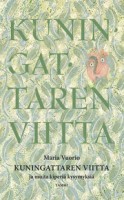 Kuningattaren viitta ja muita kiperiä kysymyksiä
Kuningattaren viitta ja muita kiperiä kysymyksiä
[The Queen’s cloak and other knotty issues]
Kuvitus [Ill. by]: Virpi Talvitie
Helsinki: Tammi, 2011. 71 p.
ISBN 978-951-31-6252-8
€ 20.60, hardback
The style of Maria Vuorio’s books demands quiet concentration – but you could get quite hooked on their slow, thoughtful, gentle story-telling. Vuorio carries on the tradition of classic animal fables, following in the footsteps of Hans Christian Andersen, but with a personal twist. She is masterful in describing different emotional states – whether evoking the inner lives of humans or of anthropomorphised animals. Her stories and fairy tales hand the reader a magnifying glass that brings into view even the smallest, most insignificant creature or thing. The entire universe is present in the stories, for example when an earthworm ponders the meaning of life, a bear breaks into the National Museum, or a noxious insect imperils cultural exchange between Finland and Denmark. Talvitie has drawn an allegorical picture for each tale.
Translated by Fleur Jeremiah and Emily Jeremiah
The Tollander Prize to Ulla-Lena Lundberg
17 February 2011 | In the news
One of the biggest literary prizes in Finland is the Tollander Prize, awarded annually on 5 February, the birthday of he national poet J.L. Runeberg, by Svenska litteratursällskapet i Finland (the Society of Swedish Literature in Finland). The prize is worth €35,000.
The recipient of the 2011 Tollander Prize is Ulla-Lena Lundberg, a versatile writer of novels, short stories, poems and travel essays. ‘She moves freely in different landscapes, times and cultures, finding universality in locality, whether on the island of Kökar in Åland, in Africa or in Siberia’, said the jury.
Written between 1989 and 1995, Lundberg’s fictional trilogy of Leo, Stora världen (‘The big world’) and Allt man kan önska sig (‘Everything one can wish for’), focused on the seafaring history and evolution of shipping in the Finnish Åland islands. Her autobiographical work Sibirien (Siberia’, 1993) has been published in German, Danish and Dutch.
Read the extracts from her latest book, Jägarens leende (‘Smile of the hunter’, 2010), on rock art, reviewed on our pages by Pia Ingström.
New library for Helsinki
20 June 2013 | In the news

The new Helsinki library: Käännös by ALA Architects Ltd
The city of Helsinki will have a new Central Library in the near future: an architectural competition for a new building was completed in June. The winner, chosen out of 554 entries, foreign and Finnish, is entitled Käännös (‘Turn’ – or ‘Translation’), entered by the Finnish ALA Architects Ltd (architects Juho Grönholm, Antti Nousjoki, Janne Teräsvirta, Samuli Woolston). The entry was also one of the favourites with the public in an earlier stage of the competition.
The jury’s decision was unanimous: in their opinion, Käännös is ‘impressive’ and ‘casually generous’; it fits into the urban structure as an feasible, usable and ecological construction. The site could not be more central: close to the citys’ railway station, it faces the House of Parliament, next to the Museum of Contemporary Art Kiasma and the new Music Centre (opened 2011): literary art and literature will join the other art forms.
Hip hip hurray, Moomins!
22 October 2010 | This 'n' that
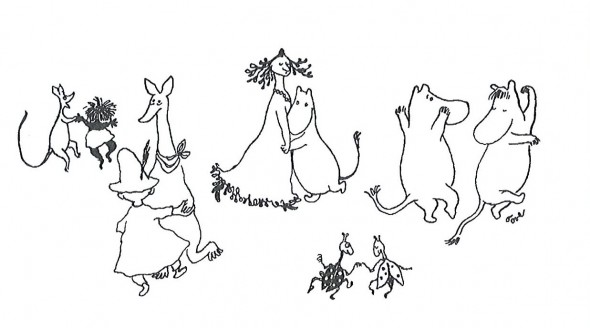
Partying in Moomin Valley: Moomintroll (second from right) dancing through the night with the Snork Maiden (from Tove Jansson’s second Moomin book, Kometjakten, Comet in Moominland, 1946)
The Moomins, those sympathetic, rotund white creatures, and their friends in Moomin Valley celebrate their 65th birthday in 2010.
Tove Jansson published her first illustrated Moomin book, Småtrollen och den stora översvämningen (‘The little trolls and the big flood’) in 1945. In the 1950s the inhabitants of Moomin Valley became increasingly popular both in Finland and abroad, and translations began to appear – as did the first Moomin merchandise in the shops.
Jansson later confessed that she eventually had begun to hate her troll – but luckily she managed to revise her writing, and the Moomin books became more serious and philosophical, yet retaining their delicious humour and mild anarchism. The last of the nine storybooks, Moominvalley in November, appeared in 1970, after which Jansson wrote novels and short stories for adults.
Tove Jansson (1914–2001) was a painter, caricaturist, comic strip artist, illustrator and author of books for both children and adults. Her Moomin comic strips were published in the daily paper the London Evening News between 1954 and 1974; from 1960 onwards the strips were written and illustrated by Tove’s brother Lars Jansson (1926–2000).
Tove’s niece, Sophia Jansson (born 1962) now runs Moomin Characters Ltd as its artistic director and majority shareholder. (The company’s latest turnover was 3,6 million euros).
For the ever-growing fandom of Jansson there is a delightful biography of Tove (click ‘English’) and her family on the site, complete with pictures, video clips and texts.
The world now knows Moomins; the books have been translated into 40 languages. The London Children’s Film Festival in October 2010 featured the film Moomins and the Comet Chase in 3D, with a soundtrack by the Icelandic artist Björk. An exhibition celebrating 65 years of the Moomins (from 23 October to 15 January 2011) at the Bury Art Gallery in Greater Manchester presented Jansson’s illustrations of Moominvalley and its inhabitants.
In association with several commercial partners in the Nordic countries Moomin Characters launched a year-long campaign collecting funds to be donated to the World Wildlife Foundation for the protection of the Baltic Sea. Tove Jansson lived by the Baltic all her life – she spent most of her summers on a small barren island called Klovharu – and the sea featured strongly in her books for both children and adults.
Peter von Bagh: Junassa [On the train]
26 August 2011 | Mini reviews, Reviews
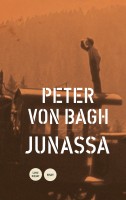 Peter von Bagh
Peter von Bagh
Junassa
[On the train]
Helsinki: Love Kirjat / WSOY, 2011. 255 p., ill.
ISBN 978-951-0-37921-9
€18, hardback
Professor Peter von Bagh, a film director and academic, is the author of a wide range of books on the history of film and culture. In this small-scale volume of essays, he investigates the significant role played by trains and railways in cinematic plot structures since the days of silent film. The text chugs along in a series of snippets, reminiscent of a rail passenger’s experience of scenery zipping past. This book looks at classics of the film noir, Western and romance genres, along with films that have used trains as a deeper metaphor for life. von Bagh also considers the critically derided but widely loved Finnish popular culture from the 1940s and ’50s, as well as fiction. For example, author Juhani Aho’s first novel, Rautatie (‘The railway’, 1884), depicted an individual’s first experience of a train journey with a degree of authenticity that it can be compared to the uproar the Lumière brothers’ early films generated among the audiences. Unfortunately Junassa lacks an index of the works and people mentioned in the text.
Translated by Ruth Urbom
Reflections on light
24 September 2014 | Extracts, Non-fiction
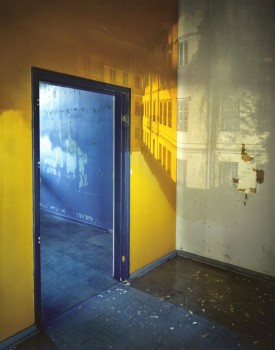
Speaking House #12, 2006. Photo: Marja PIrilä
A camera obscura (‘darkened room’) is the optical device that made photography possible; it is a box – or a room – with a hole in one side. Photographer Marja Pirilä has been using this method as a tool for almost 20 years. The book Carried by Light spans more than 30 years of her photography.
In the book artist and researcher Jyrki Siukonen notes in his essay ‘Eyes and Cameras’ that ‘in photographing spaces Pirilä also depicts people. The dreams continue on the walls of the empty building, as if after the people the house had become like them and were dreaming the dreams itself.’
Photographs and text extracts from Carried by Light by Marja Pirilä (Musta Taide, 2014)

